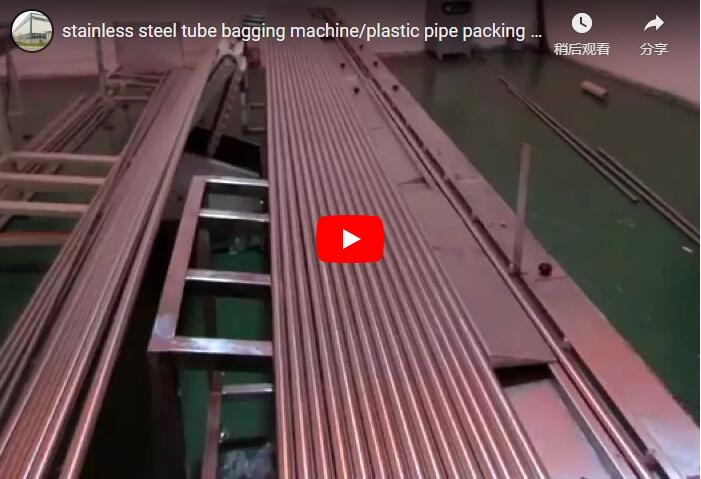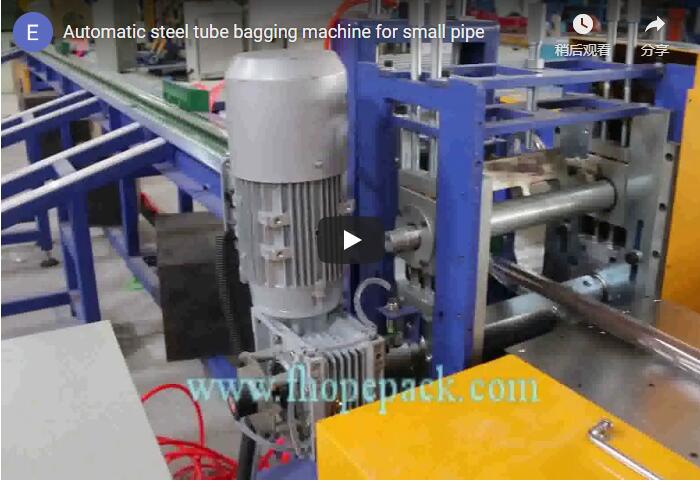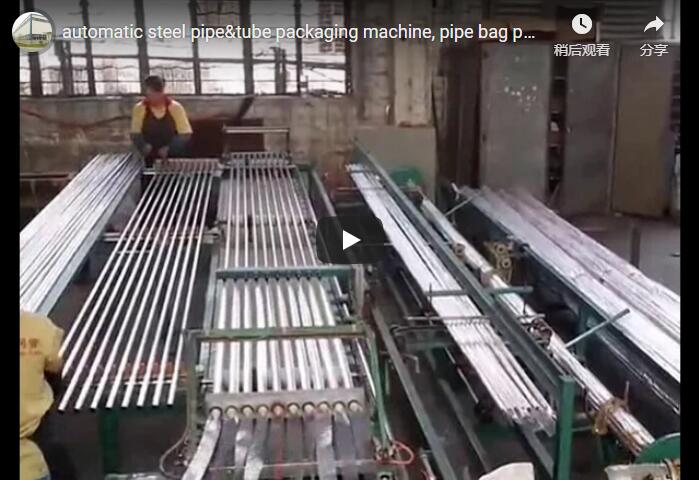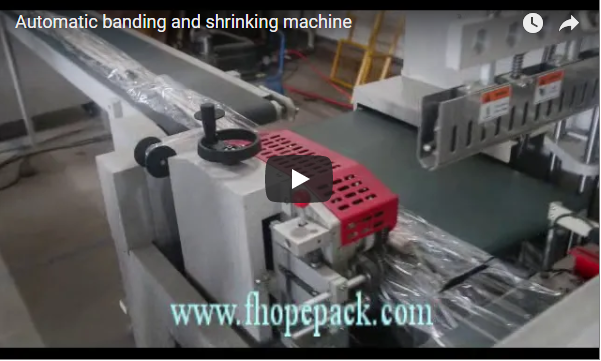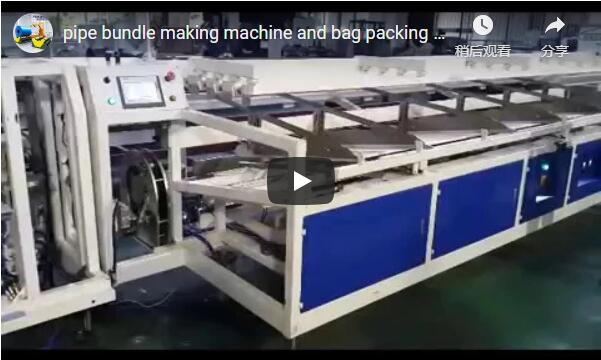Optimizing PVC Pipe Packaging: A Deep Dive into Offline Strapping and Bagging Lines
Handling and packaging long lengths of PVC pipe efficiently and securely presents a common challenge in manufacturing and distribution. While inline packaging systems integrated directly with extrusion lines offer high throughput, offline systems provide crucial flexibility and efficiency for specific production scenarios. This article explores the functionality, technical aspects, and operational considerations of offline PVC pipe strapping and bagging lines, aligning with the practical, instructional style valued by fabricators.
1. Understanding Offline PVC Pipe Packaging Systems
An "offline" packaging line operates independently from the pipe extrusion process. Pipes are typically transported from the extrusion lines or storage areas to the offline system's infeed. This decoupling offers significant advantages:
- Handling Multiple Sources: A single offline line can process pipes from several extrusion lines running different sizes or schedules.
- Buffer Capability: Allows packaging to continue even if extrusion lines are temporarily down or undergoing changeovers, and vice-versa.
- Processing Stored Inventory: Enables packaging of pipes that have been previously produced and stored.
The primary function of these lines is to automatically count, bundle, strap, and then enclose the pipe bundles in protective bags.
2. Operational Workflow: Step-by-Step
While specific configurations vary, a typical operational sequence for an offline PVC pipe strapping and bagging line involves:
- Pipe Infeed: Pipes are loaded onto an infeed conveyor or accumulation table, often manually or via automated transfer systems.
- Counting and Collation: Sensors or mechanical devices count the pipes as they move into a collation area, where they are arranged into the desired bundle shape (e.g., hexagonal, square).
- Bundle Formation: The collated pipes form a complete layer or bundle of the pre-set quantity.
- Transfer to Strapping: The formed bundle is transferred to the strapping station(s).
- Automatic Strapping: One or more strapping heads apply plastic (usually PP or PET) straps around the bundle at pre-determined positions to secure it. Tensioning, sealing (heat or friction weld), and cutting are automated.
- Bundle Transfer to Bagging: The strapped bundle moves conveyor to the bagging station.
- Bag Inflation and Insertion: A pre-made or continuous tube of plastic film is opened (often inflated with air), and the pipe bundle is automatically inserted into the bag.
- Bag Sealing and Cutting: The ends of the bag are sealed (typically heat-sealed), and the finished bagged bundle is cut from the film roll (if using continuous tubing).
- Discharge: The finished, packaged bundle is discharged onto an exit conveyor or table for removal and palletizing/storage.
3. Key Technical Specifications and Parameters
When evaluating or operating these systems, key technical data points include:
- Pipe Handling Capability:
- Diameter Range: (e.g., 16mm - 110mm, varies by machine)
- Length Range: (e.g., 2 meters - 6 meters, depends on machine frame)
- Bundle Configuration:
- Bundle Size/Shapes: (e.g., Hexagonal, Square, Rectangular; specified max width/height)
- Number of Pipes per Bundle: Programmable based on pipe diameter and desired pack format.
- Strapping System:
- Strap Type: Polypropylene (PP) or Polyester (PET)
- Strap Width/Thickness: (e.g., 9mm - 16mm width)
- Number of Straps per Bundle: Programmable
- Strapping Head Type: Heat seal, friction weld
- Bagging System:
- Bag Material: PE film (Polyethylene)
- Film Thickness: (e.g., 50 - 150 microns)
- Bagging Method: Pre-made bags or Form-Fill-Seal from tubular film roll
- Sealing Method: Heat sealing bars
- Performance:
- Cycle Time: (e.g., 30-90 seconds per bundle, highly dependent on bundle size, number of straps, and pipe length)
- Throughput: Bundles per hour
- Control System:
- PLC (Programmable Logic Controller) based automation
- HMI (Human Machine Interface) touchscreen for parameter setting, diagnostics, and operation.
- Utilities:
- Power Requirements: (e.g., 480V/3Ph/60Hz or local standard)
- Compressed Air: Pressure (e.g., 6-8 bar) and consumption rate.
4. Advantages of Offline Systems in Specific Scenarios
The original description highlighted capacity, speed, and versatility. Let's refine these benefits in a technical context:
- Enhanced Flexibility: The primary strength. Decoupling allows the packaging line to run independently, accommodating varying schedules from multiple extrusion lines or processing backlogs without impacting extrusion uptime. Ideal for manufacturers producing a diverse range of pipe sizes not easily handled by dedicated inline systems.
- Optimized Resource Allocation: Suitable for operations where production volumes from individual lines don't justify dedicated inline packaging. A single offline system can serve several lines cost-effectively.
- Consistent Packaging Quality: Automation ensures repeatable bundle counts, strap tension, placement, and bag sealing, reducing manual errors and improving package integrity.
- Improved Maintainability: Maintenance on the packaging line can be performed without shutting down pipe production, contributing to overall plant efficiency.
- Space Optimization: While the line itself requires space, it can be located more flexibly within the plant compared to inline systems that must fit directly downstream of extruders.
5. Operator Experience and Maintenance Considerations
From an operational standpoint, key factors include:
- Ease of Use: Modern systems feature intuitive HMI touchscreens allowing operators to select pre-programmed recipes for different pipe sizes and bundle configurations, simplifying changeovers.
- Changeover Time: The time required to adjust guides, counters, strapping positions, and bagging parameters for different products is a critical performance metric. Systems designed for quick changeovers minimize downtime.
- Consumable Management: Operators are responsible for replenishing strapping rolls and bagging film, requiring accessible loading points and straightforward threading paths.
- Routine Maintenance: Includes cleaning sensors, checking strap sealing mechanisms, inspecting pneumatic components, lubricating moving parts, and performing safety checks according to the manufacturer's schedule.
- Troubleshooting: HMIs typically provide diagnostic information to help operators identify and resolve common issues like strap jams, film feed problems, or sensor faults.
6. Integration Within the Plant Flow
Effective implementation requires considering how the offline line fits into the broader material flow:
- Infeed Logistics: How pipes arrive – forklifts delivering crates, overhead cranes, AGVs, or simple roller conveyors from cooling/cutting stations.
- Outfeed Handling: How finished bundles are removed – roller conveyors leading to palletizing areas (manual or robotic), accumulation tables, or direct loading for shipment.
7. Selecting the Right Offline System
Choosing the appropriate offline strapping and bagging line depends on:
- Production Volume: Total number of pipes/bundles needing packaging per shift/day.
- Product Range: Diameters, lengths, and variability of pipes produced.
- Required Bundle Specifications: Sizes, shapes, and required level of protection.
- Available Floor Space and Layout: Integration into the existing plant.
- Budget: Initial investment cost versus long-term operational savings and efficiency gains.
- Level of Automation: Desired reduction in manual labor.

Conclusion
Offline PVC pipe strapping and bagging lines offer a powerful solution for manufacturers seeking flexibility and efficiency in their end-of-line packaging operations. By automating the counting, bundling, strapping, and bagging process independently from extrusion, these systems cater effectively to facilities with multiple production lines, diverse product ranges, or variable production schedules. Understanding the operational workflow, key technical parameters, and integration requirements allows businesses to leverage this technology effectively, ensuring pipes are packaged securely, consistently, and efficiently.
For more details on specific equipment configurations and capabilities:
https://www.fhopepack.com/Plastic-Pipe-Packing-Line/

